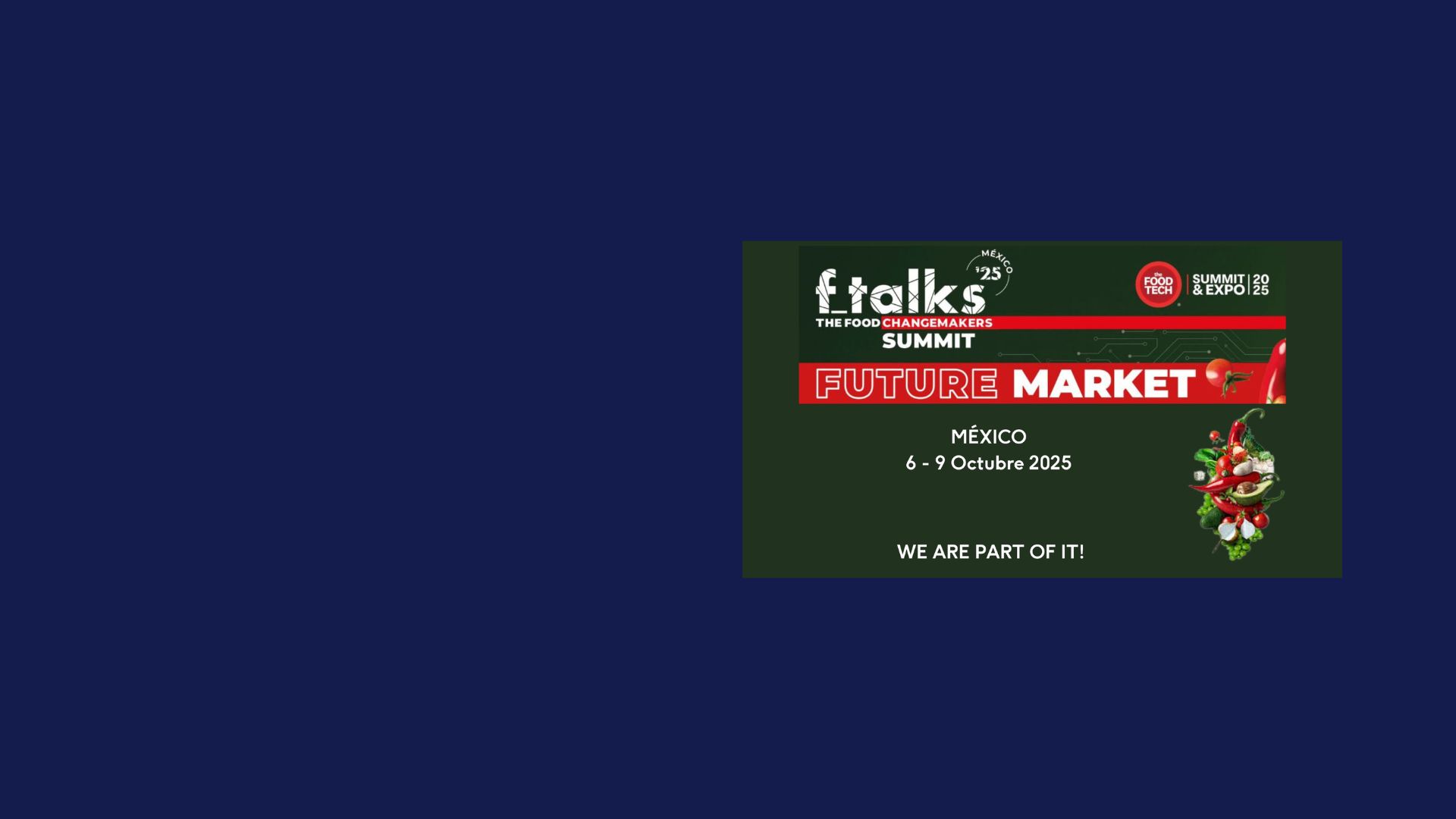In an environment where every minute of downtime costs a great deal of money, knowing examples of predictive maintenance is essential for plant managers and senior executives. Beyond theory, it is these practical cases that prove how anticipating failures prevents production stoppages, optimises energy consumption, and safeguards the quality of the final product.
The aim of this article is to present predictive maintenance examples in industry with a sector-based approach: from industrial and commercial refrigeration —where a refrigerant leak or a compressor breakdown can ruin tonnes of food— to packaging lines and logistics centres that sustain the supply chain.
These predictive maintenance examples are not just inspirational; they are a practical guide to understanding where to apply sensors, analytics and algorithms, and what tangible results can be expected.
Examples of predictive maintenance in industrial and commercial refrigeration
Refrigeration is a critical area where examples of predictive maintenance deliver immediate benefits. In the food, logistics and retail sectors, a failure in a freezing tunnel or a cold room can ruin tonnes of product and generate million-euro losses.
- Industrial ammonia or CO₂ compressors: vibration and power monitoring detect imbalance or overload. This predictive maintenance example reduces major breakdowns and delivers up to 15% energy savings. To explore this critical asset in depth, see our dedicated article on predictive maintenance of a compressor.
- Evaporators: temperature and humidity sensors anticipate ice build-up, avoiding blockages and improving heat exchange efficiency.
- Cold rooms: thermography on panels and doors identifies invisible thermal leaks, cutting energy losses and product spoilage.
- Freezing tunnels: current monitoring in fans alerts of overloads, preventing full line stoppages.
Examples of predictive maintenance in HVAC systems
In supermarkets, warehouses and logistics centres, HVAC represents both a major operating cost and a risk for comfort and product preservation.
- HVAC in large facilities: monitoring flow rates, filter pressure and energy consumption anticipates blockages and schedules planned changes, reducing cost peaks.
- Industrial air-conditioning units: pressure and temperature sensors in compressors detect efficiency losses or refrigerant leaks.
- Climate control in refrigerated warehouses: analysis of electrical consumption patterns identifies oversized or inefficient equipment.
Examples of predictive maintenance in auxiliary installations
Water and steam
- Steam boilers: pressure and temperature sensors anticipate scaling and leaks, improving safety and efficiency.
- Industrial water networks: ultrasound detects hidden leaks, cutting costs and preventing structural damage.
Electricity and renewable energy
- Electrical panels and substations: infrared thermography identifies hotspots in connections, reducing fire risk and downtime.
- Rooftop solar PV: inverter monitoring detects drops in panel output, optimising energy generation.
- Industrial batteries: cycle analysis extends lifespan in forklifts or backup systems.
Associated production processes
- Pasteurisation lines: flow and pressure monitoring detects thermal efficiency losses that affect product quality and food safety.
- Fluid pumps: vibration monitoring detects cavitation and misalignment, reducing repair costs.
Examples of predictive maintenance in packaging and processing lines
In food and beverage plants, packaging lines are often the bottleneck of the entire operation. A conveyor stoppage or pneumatic system fault can halt the full chain, causing productivity losses and delivery failures. The following examples of predictive maintenance in packaging and processing lines show how to anticipate these incidents.
- Conveyors and gear reducers: vibration analysis on motors and reducers detects misalignment or bearing wear. This example avoids breakdowns during demand peaks and reduces emergency spare part costs.
- Pneumatic filling systems: ultrasound locates leaks in valves and hoses. Early detection prevents product losses and high energy overconsumption.
- High-speed motors: monitoring imbalance and overheating prevents packaging defects. This ensures continuity in critical filling and sealing lines.
- Labelling and traceability: thermography on print heads and labellers detects overheating that could cause batch or code errors. These predictive maintenance examples minimise traceability issues and customer claims.
- Refrigeration in packaging processes: in lines working with chilled or frozen products, PdM applies to heat exchangers, rapid cooling tunnels and controlled-atmosphere systems.
- Example: flow and pressure sensors in heat exchangers detect blockages that slow down product cooling.
- Example: predictive monitoring in cooling tunnels prevents fan overloads and uneven temperatures, protecting food quality.
Examples of predictive maintenance in logistics centres
In logistics hubs, where every minute counts, predictive maintenance examples are especially relevant. A breakdown in a sorter or a fault in HVAC can delay thousands of deliveries and directly impact customer satisfaction.
- Automated sorters: IoT and machine learning monitor vibrations and power consumption in motors and rollers. This anticipates jams or mechanical failures in parcel sorting systems, critical during peak campaigns.
- HVAC in warehouses: flow, temperature and energy monitoring optimises climate systems. This predictive maintenance example in logistics centres reduces energy costs and guarantees optimal storage conditions.
- Automatic doors and loading bays: cycle counters and wear analysis detect anomalies in opening/closing systems, preventing accidents, loading delays and operational stoppages.
- Refrigeration in logistics centres: PdM applied to cold rooms, evaporators and distribution compressors.
- Example: predictive monitoring of compressor power consumption detects anomalies that signal mechanical faults.
- Example: humidity sensors in evaporators prevent ice build-up that blocks airflow.
Examples of predictive maintenance in large supermarkets and hypermarkets
Supermarkets, particularly large formats, are an environment where examples of predictive maintenance directly affect profitability, food safety and customer experience. From display cabinets to centralised refrigeration plants, every critical asset can be monitored predictively.
- Refrigeration in sales areas:
- Display cases and cabinets: predictive monitoring of energy consumption and internal temperature anticipates compressor and fan failures.
- In hypermarkets: PdM extends to centralised CO₂ or ammonia racks, where vibration and pressure sensors detect imbalances before the whole installation is affected.
- HVAC for customers and staff: monitored via flow, pressure and consumption sensors. In hypermarkets, zoning and BMS systems benefit from PdM to balance loads and avoid overspending.
- Energy and lighting: PdM detects overheating in electrical panels and falling performance in LED systems. In large stores, predictive monitoring extends to rooftop solar PV and backup batteries.
- Storage rooms: cold rooms for frozen, fresh and meat products rely on PdM applied to evaporators, compressors and humidity controls, ensuring cold-chain stability even during demand peaks.
Other industrial sectors: highlighted examples
Although the focus of this article is on refrigeration, packaging and logistics, there are many other predictive maintenance examples in industry. These cases confirm that PdM is a transversal methodology adaptable to different environments.
Pharmaceutical and biotechnology
- Laboratory cooling systems: pressure and temperature sensors prevent deviations that could compromise vaccines or biological reagents.
- Fermenters and bioreactors: monitoring flow, pH and temperature prevents batch deviations.
- Drug storage rooms: predictive climate monitoring ensures compliance with strict regulations (FDA, EMA).
Chemical industry
- Reactors: pressure and temperature monitoring anticipates overpressure.
- Transfer pumps: vibration analysis detects cavitation.
- Ventilation in ATEX areas: motor monitoring prevents overheating and safety hazards.
- Cooling connection: chillers and cooling towers stabilise exothermic processes; PdM ensures safety and efficiency.
Steel and metallurgy
- Electric arc furnaces: monitoring energy consumption and electrode temperature.
- Hot rolling mills: vibration analysis prevents roller misalignment.
- Overhead cranes: cycle counters detect wear in cables, scheduling safe replacements.
- Cooling connection: PdM in water recirculation systems and valves ensures thermal stability and steel quality.
Aerospace and railway
- Aircraft turbines in MRO workshops: predictive blade monitoring with vibration and thermography.
- High-speed trains: axle bearing and traction motor sensors anticipate failures before safety is compromised.
- Aircraft hydraulic systems: lubricant analysis detects wear in critical components.
- Cooling connection: predictive HVAC in test cabins and maintenance hangars ensures safety and passenger comfort.
Food and beverage
- Mills and oil presses: vibration monitoring avoids stoppages during harvest campaigns.
- Bottling lines: acoustic analysis in pumps anticipates leaks or sealing faults.
- Pasteurisers: flow and temperature sensors predict thermal efficiency losses.
- Cooling connection: PdM in cold rooms and rapid cooling tunnels preserves quality in fruits, vegetables and wines.
Top 10 predictive maintenance examples
For an executive overview, here is a selection of the top 10 predictive maintenance examples across strategic sectors. The ranking reflects criteria such as economic weight, sector diversity, asset criticality, and impact on costs and efficiency.
- Industrial refrigeration compressors → detection of overloads and vibrations; 10–15% energy savings.
- Cold room evaporators → ice build-up prevention; fewer blockages and spoilage.
- HVAC in logistics centres → filter and energy monitoring; higher efficiency and comfort.
- Packaging conveyors → vibration analysis; reduced breakdowns during peak demand.
- Pneumatic filling systems → ultrasound; early detection of compressed-air leaks.
- Automated sorters in logistics → IoT and machine learning; fewer jams, better throughput.
- Supermarket refrigeration cabinets → predictive monitoring of power and temperature; compressor failure prevention.
- Centralised refrigeration in hypermarkets → PdM on CO₂ racks; stable cold chain in sales areas.
- Chemical reactors → predictive pressure and temperature monitoring; safer operations.
- Pharmaceutical fermenters → flow, pH and temperature sensors; prevention of batch deviations.
These cases show how predictive maintenance examples in industry apply to diverse assets, with direct impact on costs, safety and operational continuity.
Applications of predictive maintenance: common learnings
Beyond specific cases, all these predictive maintenance examples share common patterns: they turn data into operational decisions that deliver immediate value. Whether in refrigeration, packaging or logistics, applications of predictive maintenance succeed when technology meets management.
Main learnings:
- Failure anticipation: sensors and analytics detect anomalies long before critical breakdowns.
- Energy cost reduction: compressors, HVAC and boilers show measurable savings in consumption.
- Extended asset lifetime: by intervening only when needed, components like bearings, batteries or valves last longer.
- Operational continuity: in logistics, packaging and retail, PdM protects bottlenecks in the supply chain.
- Quality and safety: in food and pharma, PdM ensures compliance with standards and protects consumers and patients.
These patterns confirm that PdM is not an end in itself, but a transversal tool to build resilience, sustainability and competitive advantage in strategic sectors.
Conclusion: from predictive maintenance examples to competitive advantage
The reviewed cases prove that predictive maintenance examples are not theory or isolated pilots: they are established practices in refrigeration, packaging, logistics, supermarkets, pharma, steel and other strategic industries. Each application confirms that anticipating failures saves energy, spares and downtime, while strengthening safety and customer trust.
The message for decision-makers is clear: predictive maintenance examples show that investing in PdM means protecting revenue, ensuring continuity, and reinforcing customer confidence. Yet the key lies not only in technology, but in adapting each application to the company’s maturity and asset criticality.
These examples align with the broader transformation towards Industry 5.0 outlined by the European Commission, where predictive maintenance plays a central role in sustainable, resilient and human-centric manufacturing.
If you want to delve into the tools that make it possible, read our article on predictive maintenance software. For a step-by-step methodology, see our piece on the predictive maintenance plan in Industry 4.0. In this way, predictive maintenance examples in industry become a repeatable strategy that transforms data into measurable and sustainable results.



